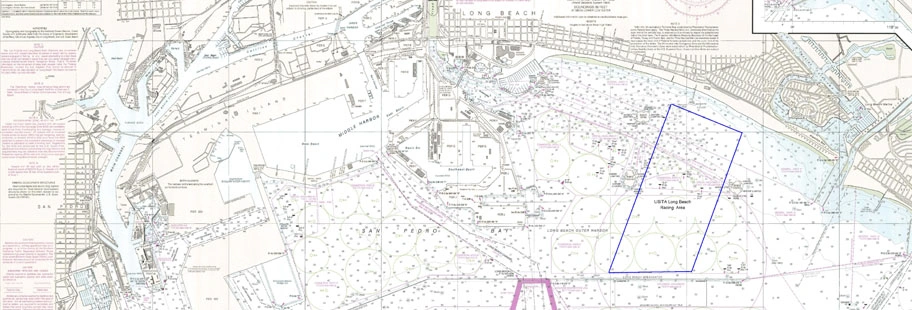Because of our close proximity to the ocean and sky, environmental awareness comes naturally to the sailors in USITA Long Beach. Almost all of our sailing and racing programs take place in San Pedro Bay, which is home to the Ports of Long Beach and Los Angeles, the largest port complex in the United States. Despite the intense commercial activity in and around these two ports, the air and water is remarkably clean. What makes this even more remarkable is that the bay is largely cut off from the ocean by a breakwater. This means that the natural cleansing action caused by the tide and ocean waves interacting with the shore is greatly diminished.
Sailors Really Appreciate Clean Water
As small-boat sailors, we are constantly aware of water quality. There is nothing quite like a wave hitting you in the face when you are hiked out going upwind to give you a really good assessment of water quality. After a long day of racing on San Pedro Bay, we are very grateful that ocean we sail on is so clean. As you can imagine, maintaining good water quality in the largest port complex in the United States is not easy. Fortunately, both ports are committed to protecting our environment and have adopted policies and programs that are very effective in reducing the impact of their activities.
In 2005 the Port of Long Beach adopted their Green Policy Initiative which has been very effective in controlling both air and water pollution. The hard work by the port is being noticed by the international trade community. In a survey conducted by Shipping Gazette, a shipping trade publication, the Port of Long Beach was voted the Greenest Port in the World.
How the Ports Reduce Water Pollution
In addition to collaborating on reducing air pollution, the ports work together on reducing water pollution through their Water Resource Action Plan. When it rains, the water running off the docks into the ocean can contain oils, fuels, chemicals or liquids from leaking containers. To guard against this possibility, the ports have adopted programs for monitoring the quality of storm water running off the docks and terminals into the ocean. Fortunately, terminal owners are supporting the program and over one-half have installed equipment for removing impurities from the storm water before discharging it into the ocean.
As most you know, the Los Angeles River discharges right into the area where we sail. When we have a good rain, the river can create a real mess. The water can turn a funny color, trash is often bobbing the water, and sometimes we can see an oil sheen. Both ports are well aware of this problem, and they work with regional water agencies to identify sources of contamination along the river and make sure those responsible take corrective actions. To control floating trash, the ports use special skimmers which come in handy after a rain or when cargo is accidentally dropped into the water.
In the past, port operations have not always been kind to the environment. It was not unusual to discharge oils and sludges into the ocean without proper treatment. Found in several areas, such as at the old Long Beach Naval Station, these oils and sludges are toxic and prevent the growth of marine organisms which support fish and other marine creatures. San Pedro Ports is removing contaminated sediment by dredging, and the ecosystem is gradually being brought back to a healthy condition.

